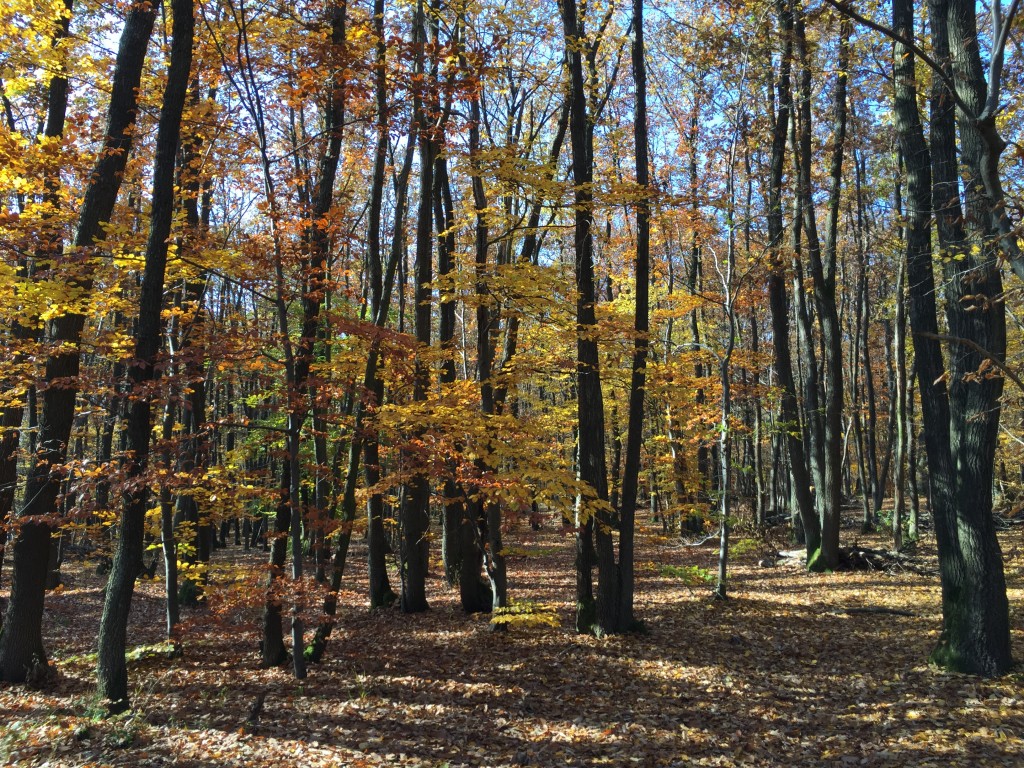
Coppice woodlands once provided significant shares of biomass for thermal energy in the proximity to urban areas, while representing hotspots of biodiversity. Can we adopt traditional management practices to today’s needs and still ensure sustainable production? And how can we harmonize existing guidelines to achieve this goal? The image shows a Quercus-Carpinus dominated outgrown coppice forest that is situated within the city boundaries of Vienna, Austria. (Photo by Viktor Bruckman)
Renewable resources are critical to the sustainable future of our planet. That means biomass is being looked on, in many ways, as a potential game-changer.
It is seen as a mitigator of climate change, as a source of energy and as the source for a variety of bio-based products that range from wood to bio-plastics and composite materials.
Recognizing this, IUFRO’s newly constituted Sustainable Forest Biomass Network Task Force plans to explore the potentials and the risks of further development of biomass – specifically biomass from forests.
The Task Force is one of several organized to advance knowledge under five research themes in accordance with the IUFRO 2015-2019 Strategy.
The five themes are: Forests, Soil and Water Interactions; Forests for People; Forests and Climate Change; Forests and Forest-based Products for a Greener Future; and Biodiversity, Ecosystem Services and Biological Invasions.
Dr. Viktor Bruckman, of the Austrian Academy of Sciences and the coordinator of this Task Force, says the primary focus of his team will be on the Forests and Climate Change theme.
However, he is quick to add that, given the cross-disciplinary nature of sustainable forest biomass, the Task Force will address topics on all of the theme areas.
The emphasis on the climate change aspect stems in part from the last report of the Intergovernmental Panel on Climate Change (IPCC), which indicated more active carbon sequestration strategies are necessary to meet targets.
The share of arable land, according to World Bank data for 2012, is about 11% of total terrestrial land area. Forests represent about 31%.
Biomass from agricultural systems is used largely to produce food and animal feed products with very little going to other uses. That suggests the largest potential for biomass as a resource for industrial feedstock materials and energy lies in natural and planted forest ecosystems.
Dr. Bruckman says, “There are many expectations of what biomass can do, but I think we must also define the limits of biomass and get a clear idea of what potentials and risks lie in its further development.
“From a forest manager’s perspective,” he says, “sustainable biomass production means the land has to be managed in a way that allows it to be harvested for generations, without degradation.”
“On the other hand,” he adds, “an investor may look at a sustainable investment strategy and perhaps be less sensitive to ecological issues, which are often playing a role in different temporal scales. So we need a clear definition to show the boundaries of a bio-economy.”
Large potentials lie in forests, he says, but the challenge is to use these potentials while ensuring sustainability and protection of environmental services such as clean water and biodiversity.
That, he adds, “is the core question our Task Force is trying to assess in all its multiple dimensions.”
And he notes an important distinction. “Our Task Force is about biomass, not bioenergy,” Dr. Bruckman says. “Biomass is a very heterogeneous feed stock with virtually unlimited potential uses and energy is just one way – ideally at the end of cascade utilization – to use it.”
Learn more about the new IUFRO Task Force “Sustainable Forest Biomass Network”:
http://www.iufro.org/science/task-forces/forest-biomass/
View all IUFRO Spotlights at http://www.iufro.org/media/iufro-spotlights/

Leave a Reply